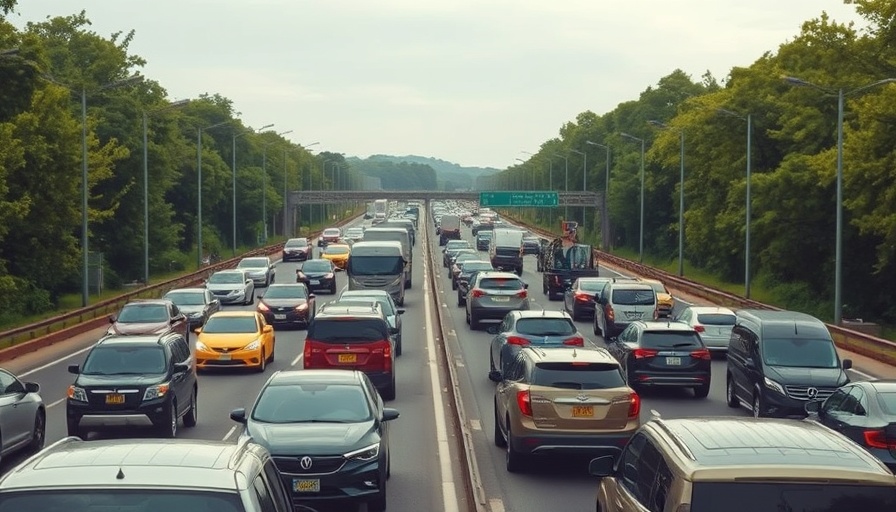
Understanding Rising Commute Times: A National Perspective
As the effects of the pandemic gradually recede, businesses are calling employees back to the office, resulting in a steady rise in commute times across the nation. The shift reflects a broader trend where commute durations are inching closer to pre-pandemic levels, with some cities feeling the pressure more than others. Understanding these dynamics is crucial for both professionals and businesses situated in Central Ohio and beyond.
Why Some Cities Thrive While Others Struggle
While many urban centers experience prolonged delays on the roads, some cities remain efficient, showcasing a mix of urban planning and infrastructure investment as potential reasons for their robust traffic conditions. For instance, cities like Indianapolis and Columbus have strategically enhanced their public transportation availability and road infrastructure, helping to mitigate the enduring effects of rising commute times.
The Local Impact on Central Ohio
For professionals in Central Ohio, increased commute times can strain both personal time management and productivity levels. With many businesses in a recovery phase, it becomes even more important for local leaders to advocate for improved infrastructure investments. Effective transit options could not only ease the burden for workers but also enhance Central Ohio’s appeal to new businesses.
Historical Context of Commute Times in America
The history of commuting in America is marked by technological and economic changes. The transition from rural to urban living has consistently altered how individuals commute. Post-World War II, American cities expanded rapidly, emphasizing automobile reliance. As we navigate the post-pandemic landscape, it’s essential to understand previous patterns to forecast potential future shifts effectively.
Future Predictions: What Lies Ahead?
Experts predict that the increase in remote work flexibility may permanently alter commuting patterns. Although traffic is rising, it may not return to the surge levels of 2019. Innovations in vehicle technology and expanding telecommuting options could lead to a landscape where peak traffic times are less burdensome. Monitoring these trends will empower professionals and local governments in Central Ohio to make informed decisions regarding infrastructure and business investments.
Commuting Strategies for Professionals
As commute times climb, professionals can benefit from adopting strategic approaches to manage their schedules effectively. Options like flexible working hours and carpooling can not only reduce commute stress but also contribute to environmental sustainability. By coordinating hours with colleagues or tapping into public transit options, individuals can reclaim precious time within their day.
Leverage Technology: Tools and Techniques for Better Commuting
Utilizing apps that provide real-time traffic conditions and public transportation schedules can significantly enhance the commuting experience. Whether it’s through Waze, Google Maps, or local transit apps, these tools can provide invaluable data to help manage daily travel and potentially avoid congested routes altogether. For Central Ohio businesses, promoting these technologies can express a commitment to employee well-being and productivity.
Emotional Toll of Long Commutes
Long commutes can take a significant emotional toll, impacting both mental health and job satisfaction. As professionals navigate increased traffic, the frustration associated with delays can diminish overall morale at work. Employers should be aware and considerate of these factors, implementing support systems that encourage employee well-being amid rising commute challenges.
As discussions around work-life balance gain traction, understanding commuting trends should be a top priority for professionals and businesses alike. By addressing commute-related issues, local leaders and employers can cultivate a more favorable and productive work environment.
To discover more about optimizing your daily commute and understanding local economic trends, explore local resources, reach out to city planners, or engage with your community to advocate for better infrastructure solutions that align with worker needs.
 Add Row
Add Row  Add
Add 




 Add Row
Add Row  Add
Add 

Write A Comment